Crumbed Pork Tenderloin Medallion with Miso Sauce was made just like I made Tonkatsu and Chicken Cutlet, but the meat is so tender. The contrast between the tender meat and the crunchy golden-brown breadcrumbs is to die for. I am serving this with a unique miso sauce.
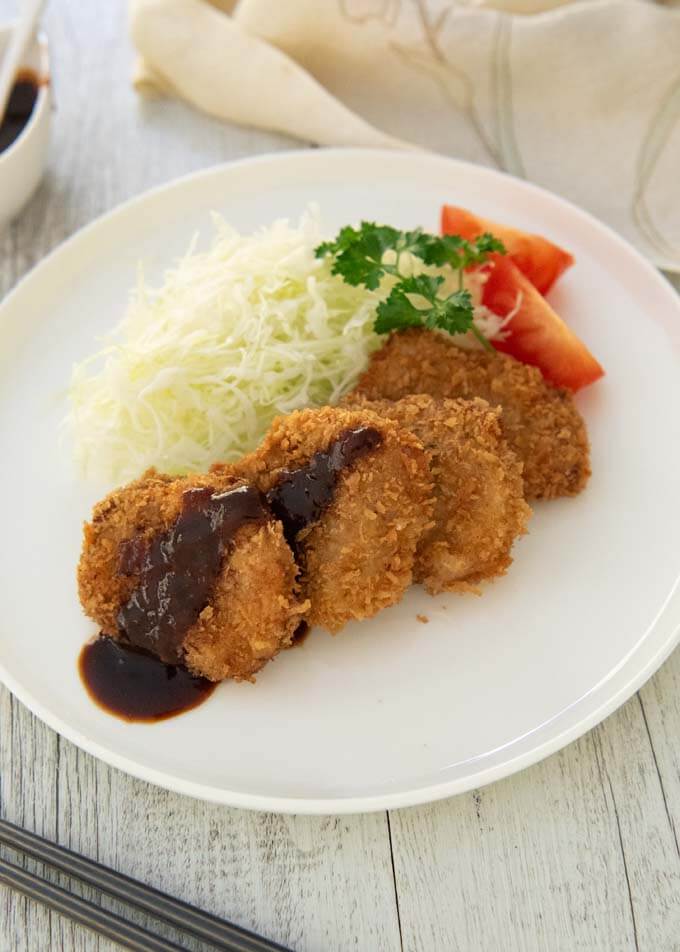
Deep-fried Crumbed Pork Tenderloin Medallion is called ‘hitokuchi katsu’ (一口カツ), which means bite-sized cutlet. The word ‘hitokuchi’ (一口) means a mouthful. Although the size of each medallion does not quite fit in your mouth, it is by far the smallest cutlet, so you get the idea.
Other than the fact that the size of the cutlet is small, and the meat is extremely tender, there is nothing special about today’s bite-sized pork cutlet. But my miso-based sauce makes today’s recipe so unique.
About Miso Sauce
Miso sauce is called ‘miso dare’ (味噌ダレ). Any miso-based sauce is generically called miso dare, and there are so many different versions and usages of it.
The miso dare that I made today for hitokuchi katsu is quite different from the miso dare used to dress ingredients. The miso sauces that I introduced in my post Miso Glazed Eggplant (Nasu Dengaku) are miso dare. Thick miso dare can be used as a dipping sauce too.
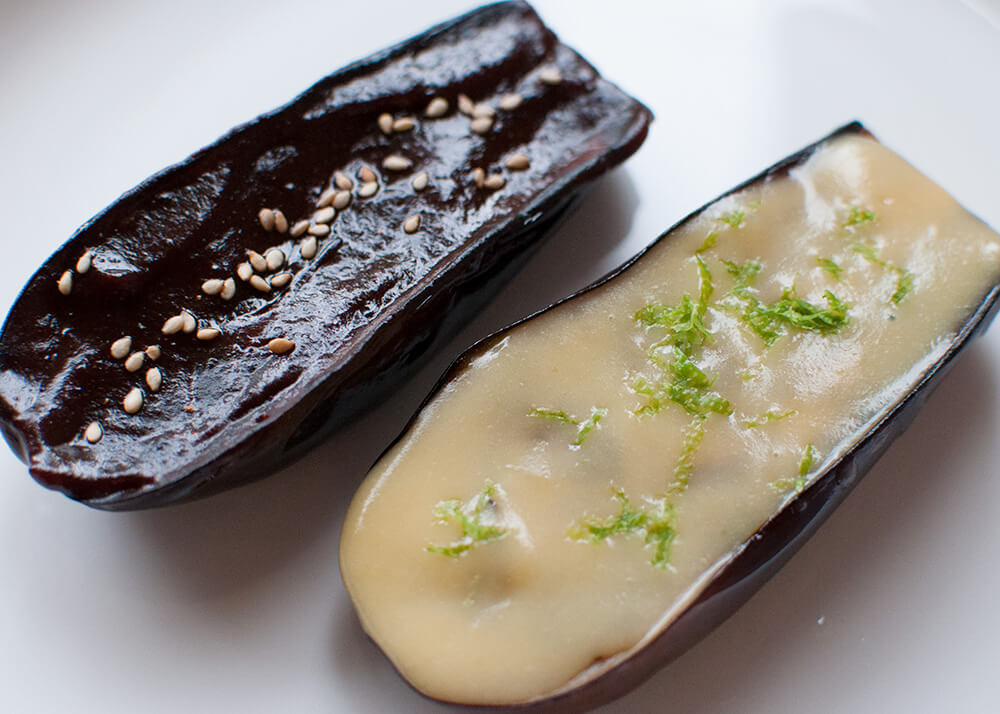
Nasu Dengaku with dark and light miso dare.
Depending on the purpose of miso dare, you need to mix different proportions of similar ingredients into the miso, which is the basis of the sauce.
Most miso dare are made with miso, cooking sake, and mirin, with or without sugar. The sweetness is important here to counter the saltiness of the miso.
Many miso dare recipes used for crumbed pork that I found on Japanese websites were way too salty as a sauce for cutlets. Perhaps, they try to maintain the miso flavour and the saucy consistency and end up with too much saltiness from the miso against the flavour of other ingredients.
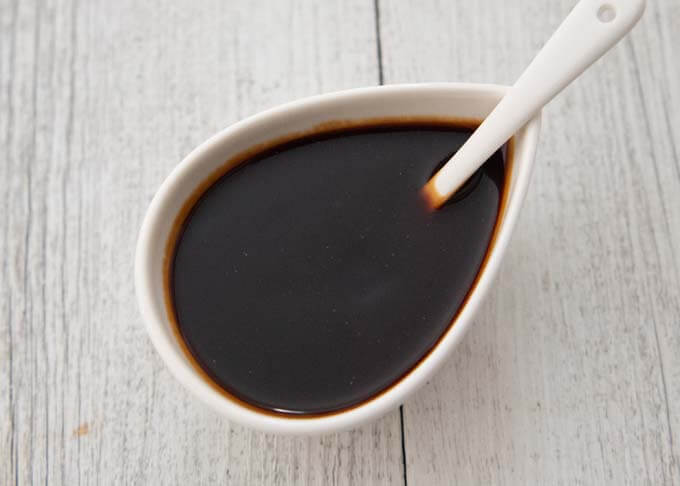
So, in my recipe I added dashi stock to the miso sauce and a small amount of corn flour/cornstarch to thicken the sauce. It is still a touch salty by my standard, but the prominent miso flavour is quite good for the cutlets. I recommend using only a small amount of it.
You can use almost any kind of miso to make a miso sauce. As explained in my post, Pantry Essentials for Japanese Home Cooking – Part 1, there are different colours of miso.
You can use any colour of miso, but for today’s dish it looks better if you avoid the same colour as those of the food. This is the very reason why I used aka miso (red miso) instead of brown miso in my recipe today – because the colour of my Crumbed Pork Tenderloin Medallion is brown.
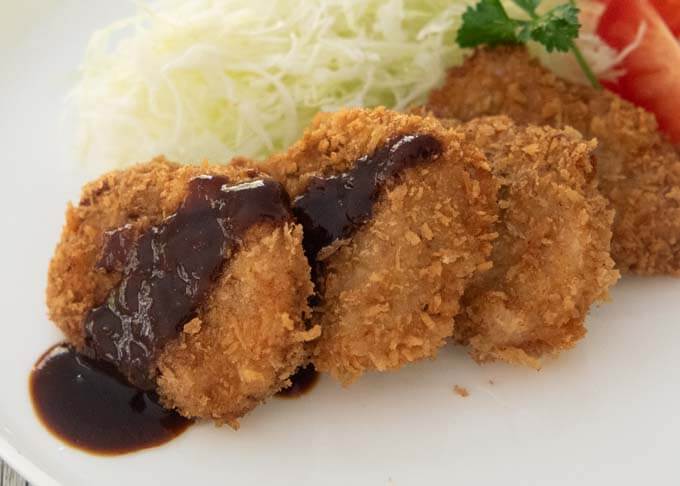
What’s In My Crumbed Pork Tenderloin Medallion with Miso Sauce
The main ingredients other than the Miso Sauce are common ingredients to make crumbed deep-fried meat such as Tonkatsu and Chicken Cutlet. But it requires slightly more flour and breadcrumbs for the same weight of the meat than these dishes. This is because you need to coat many small pieces.
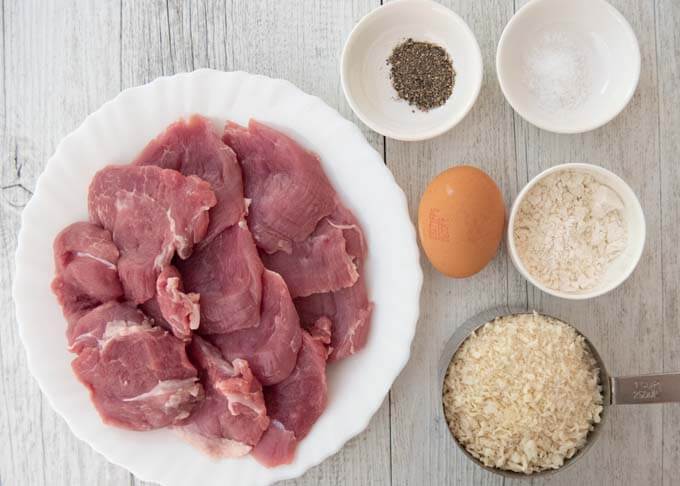
- Pork tenderloin, sliced to 2cm/¾” thick medallions.
- Salt and pepper
- Flour
- Egg, beaten
- Panko breadcrumbs
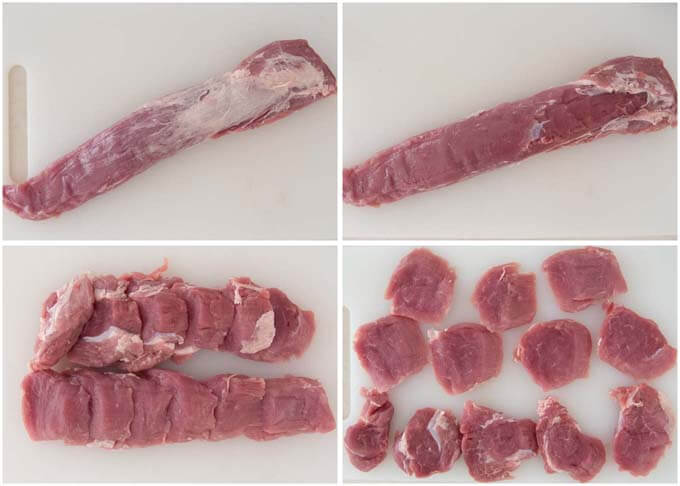
My pork tenderloin was a whole tenderloin strip. I sliced it diagonally to make the diameter of the medallions larger than the diameter of the strip, which was only about 5cm/2” at the thickest part.
Miso Dare (Miso Sauce)
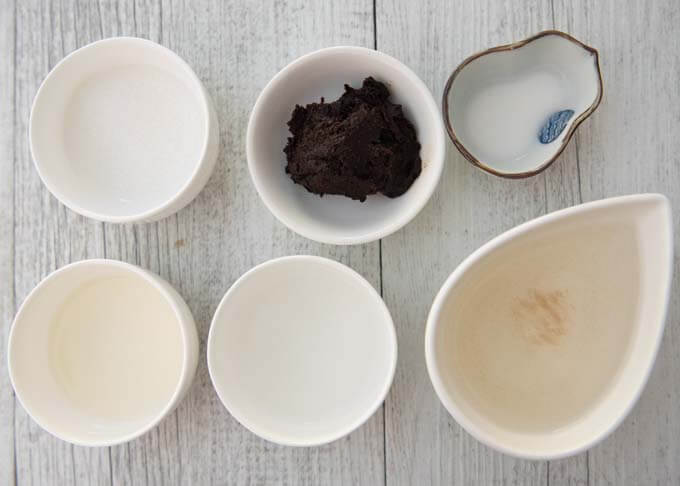
- Aka miso (red miso)
- Sugar
- Mirin
- Cooking sake
- Dashi stock
- Corn flour/cornstarch diluted in water
I used aka miso to contrast the colour of the crumbed pork, but you can use brown miso if you like. You can even use white miso, but not sweet miso.
How to Make Crumbed Pork Tenderloin Medallion with Miso Sauce
Making Miso Dare
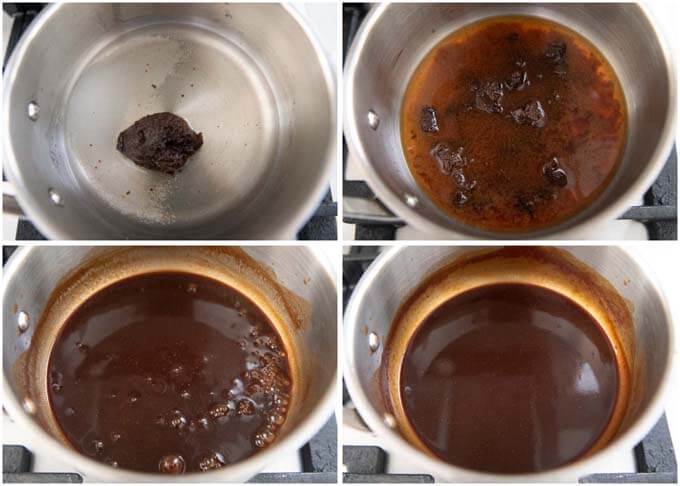
- Put all the Miso Dare ingredients in a saucepan and whisk well to dilute the miso paste.
- Bring it to a boil over medium heat, then add corn flour to thicken.
Since the quantity of Miso Dare ingredients is small, try not to overcook the sauce. The Miso Dare becomes too salty when thickened. The consistency of Miso Dare is slightly thicker than Worcestershire sauce, but not as thick as tonkatsu sauce (see Bull Dog section of Yakisoba for more details).
Making Pork Cutlets
Cooking Crumbed Pork Tenderloin Medallion is the standard process of making deep-fried crumbed meat. But before coating the pork pieces, I punched them gently to flatten them slightly to make the thickness and the size of the medallion consistent.
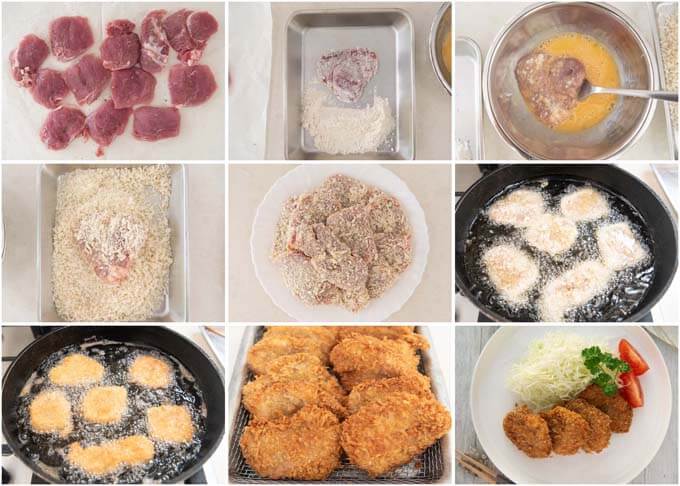
- Flatten each pork medallion slightly using your fist. Sprinkle salt and pepper on both sides of the pork pieces.
- Coat each pork piece with flour, egg, then breadcrumbs.
- Deep-fry the crumbed pork at 170-180°C/338-356°F until golden brown.
- Serve with shredded cabbage and the Miso Dare.
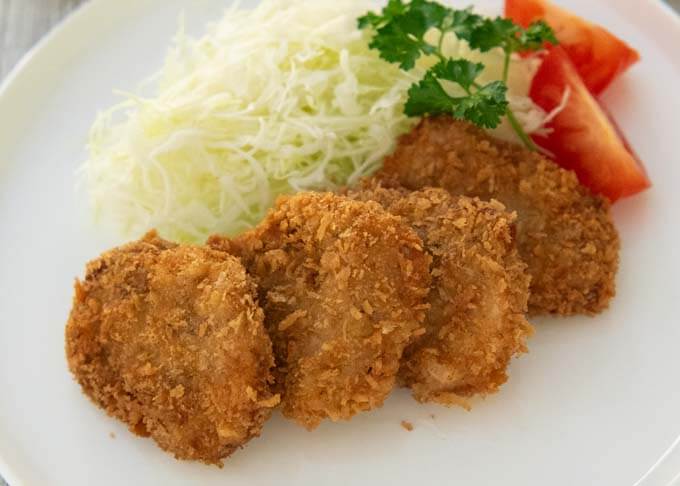
You can of course eat your Crumbed Pork Tenderloin Medallion with tonkatsu sauce just like other crumbed dishes. But you may want to try this unique sauce that is full of umami.
Yumiko![]()
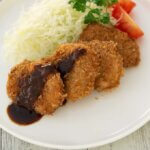
Crumbed Pork Tenderloin Medallion was made just like I made Tonkatsu and Chicken Cutlet, but the meat is so tender. The contrast between the tender meat and the crunchy golden-brown breadcrumbs is to die for. I am serving this with a unique miso sauce.
Cook time assumes that you fried pork medallions in two batches.
Don't forget to see the section 'MEAL IDEAS' below the recipe card! It gives you a list of dishes that I have already posted and this recipe that can make up a complete meal. I hope it is of help to you.
- About 450g/1lb pork tenderloin (note 1)
- ¼ tsp salt
- ¼ tsp pepper
- 2 tbsp flour
- 1 egg beaten
- 1-1¼ cup panko breadcrumbs (note 2)
- Oil to deep-fry
- 30g/1.1oz aka miso (red miso, note 3)
- 1 tbsp sugar
- 2 tbsp mirin
- 1 tbsp cooking sake
- 60ml/1fl oz dashi stock
- ¼ tsp corn flour/cornstarch diluted in ½ tsp water
- Shredded cabbage
- Sprigs of parsley
-
Put all the Miso Dare ingredients, excluding the corn flour/cornstarch, into a small saucepan and dilute the miso using a whisk.
-
Bring it to a boil at medium heat, occasionally stirring.
-
Add corn flouer/cornstarch to the pan and mix well. Remove the pan from the heat.
-
If your pork tenderloin has a silver skin (connective tissue) on it, remove it (, see the step-by-step photo) as it is chewy (note 4).
-
Starting from the thick end of the pork tenderloin, slice the meat diagonally at about a 45 degree angle (note 5). The width of each slice needs to be 2.5-3cm/1-1⅛”.
-
As you get to the tail-end of the fillet, you should make wider slices since the diameter of the fillet becomes smaller (note 6).
-
Place the sliced pork medallions on a cutting board without overlapping, and gently pound them with your fist. Pound harder for the medallions cut from the tail end of the meat, to make the thickness and the size of the medallion similar to others.
-
Sprinkle salt and pepper on both sides of pork medallions.
-
Place flour, egg and breadcrumbs on a shallow plate or in a bowl individually and line them up in this order. Place an additional clean plate or a small baking tray next to the breadcrumbs.
-
Working one medallion at a time, coat a medallion with flour, shake off excess flour, then place it in the egg and coat all over. Allow excess egg to drip, then transfer to the breadcrumbs.
-
Cover the entire medallion in breadcrumbs, making sure that a good layer of breadcrumbs is stuck to both sides. Repeat for the rest of the medallions.
-
Heat oil in a deep frying pan to 170-180°C/338-356°F. The depth of about 2-2.5cm/¾-1” is sufficient.
-
Gently place medallions into the oil, without overcrowding. Depending on the size of the pan, you may fry in 2-3 batches.
-
Fry for about 2-2.5 minutes or until the bottom side is browned. Flip the fillet with tongs or a pair of long bamboo chopsticks and cook for further 2 minutes until the other side is browned.
-
Transfer the cutlet onto a tray with a rack or lined with a couple of layers of paper towel to drain excess oil.
-
Place shredded cabbage on one side of a plate and a sprig of parsley next to it.
-
Place 4 crumbed medallions next to the cabbage.
-
Serve with the miso dare in a small container.
1. I bought a vacuum sealed whole pork tenderloin, which weighed 432g.
2. Although you will have leftovers, it is easier to crumb the meat if you have excess panko breadcrumbs.
3. I used red miso so that the miso dare stands out when poured over the brown piece of crumbed pork. But you can use brown miso or white miso. Sweet white miso such as Saikyo miso is not suited.
4. Place the tip of a sharp thin knife underneath the silver skin (between the silver skin and red meat) and slide the knife to scrape the silver skin off. If you point the blade slightly upwards while sliding, you can avoid the knife cutting into the red meat. You may also want to remove the very thin, almost transparent, membrane that partially covers the surface of the meat.
5. If your pork tenderloin is very thick (about 7-8cm/3" in diameter) you don't need to cut it diagonally. My tenderloin was only about 5cm/2" at the thickest part. By diagonally slicing, you will be able to make your medallion larger. If you want to make a larger medallion, tilt your knife further, i.e., the back of the knife gets closer to the cutting board.
6. The narrow part of the tenderloin meat needs to be cut thicker because the diameter of the meat is smaller. By pounding these harder in the subsequent step, you can make similar size medallions.
Depending on the size of your pork tenderloin, the number of medallions you get will be different. I got 12 medallions from my tenderloin.
7. Nutrition per serving. It assumes the amount of oil absorbed into the cutlet is 10% of the weight of the meat, and all of the flour, egg, breadcrumbs are used up (unlikely).
serving: 240g calories: 522kcal fat: 24g (31%) saturated fat: 3.8g (19%) trans fat: 0.2g polyunsaturated fat: 4.6g monounsaturated fat: 14g cholesterol: 160mg (53%) sodium: 694mg (30%) carbohydrates: 34g (12%) dietary fibre: 2g (7%) sugar: 5.4g protein: 39g vitamin D: 1mcg (4%) calcium: 88mg (7%) iron: 3.8mg (21%) potassium: 700mg (15%)
Meal Ideas
A typical Japanese meal consists of a main dish, a couple of side dishes, a soup and rice. I try to come up with a combination of dishes with a variety of flavours, colours, textures and make-ahead dishes.
Deep-fried crumbed dishes go well with either a potato salad or a pasta salad. I picked Japanese pasta salad from my salad collection. The bright green of the Spinach ohitashi makes the meal visually attractive.
I thought of picking a clear soup instead of miso soup, but having a miso soup with brown miso or white miso gives a flavour contrast of the miso between the main dish and the soup.
- Main: Crumbed Pork Tenderloin Medallion with Miso Sauce – today’s recipe.
- Side dish 1: Japanese Pasta Salad (Spaghetti Salad) – or Japanese Potato Salad, make ahead.
- Side dish 2: Spinach Ohitashi Salad – or other plain salad.
- Soup: Miso Soup of your choice from Miso Soup Ingredient Combinations or your favourite ingredients.
- Rice: Cooked Rice.
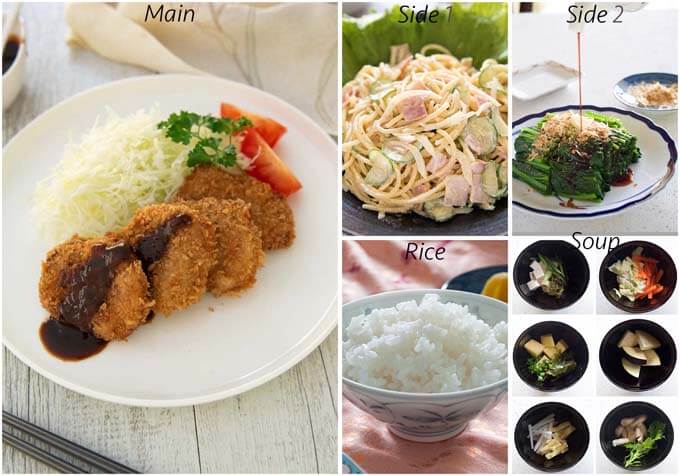
Leave a Reply